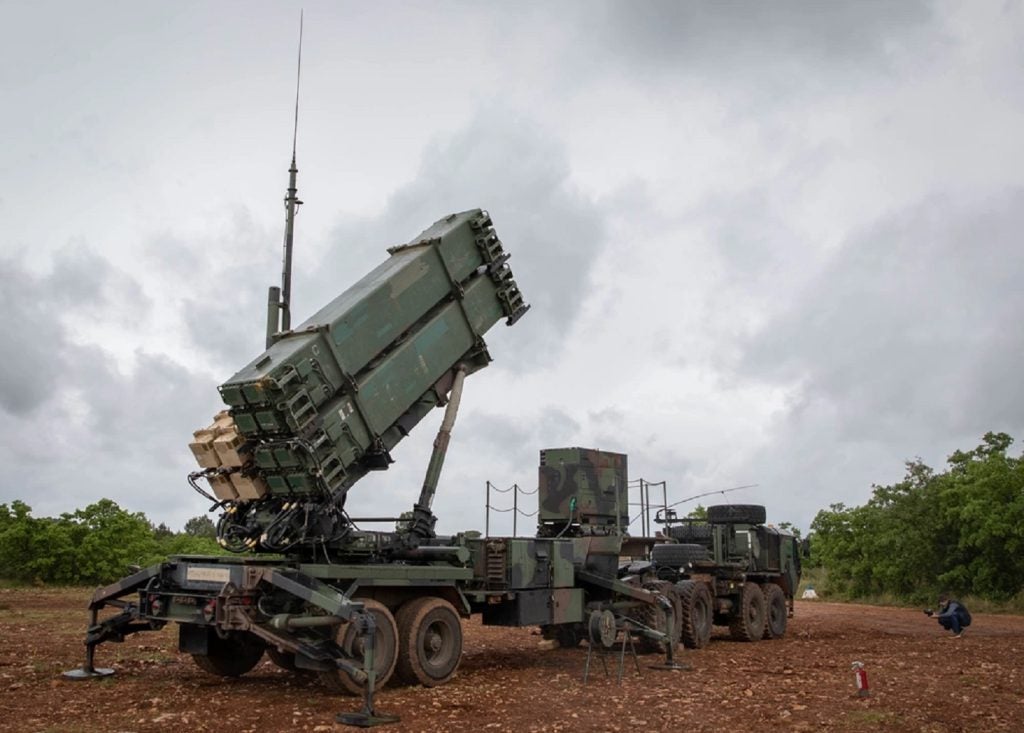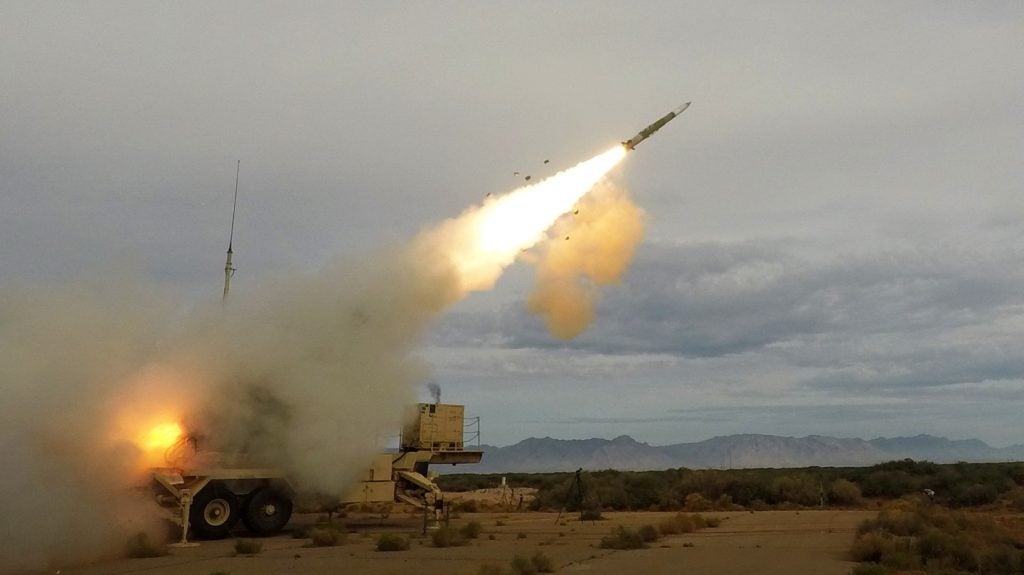On 15 June in Brussels, Nato defence ministers discussing deterrence and defence issues in preparation for the upcoming Vilnius Summit in July, confirmed an agreement to strengthen its air defences across Nato's Eastern Flank.
Ground-based air defence units will start rotations along Nato’s Eastern Flank, in addition to Nato’s long standing air policing mission. “At the moment, the Spanish NASAMS is already deployed to Estonia. With this new model, we can also start making plans for subsequent Allied rotations,” explained Estonia’s Minister of Defence Hanno Pevkur.
Allies have also agreed to improve Nato’s ability to reinforce its forces in the east by developing: more pre-positioned equipment and weapon stockpiles; more forward-deployed capabilities, including integrated air and missile defence systems; strengthened command and control; and upgraded defence plans, with specific forces pre-assigned to the defence of specific Allies.
Nato allies providing air defence
According to the Centre for Eastern Studies (OSW), key Nato allies possess significant air defence capabilities. The United States has 60 Patriot batteries and is currently constructing four more. Germany has 12 Patriot batteries, while France has eight SAMP/T batteries and is constructing two more, in addition to four Crotale NG batteries. Spain has three Patriot batteries and four NASAMS, while the Netherlands has four Patriot batteries and three NASAMS. Italy possesses six SAMP/T batteries.
Several countries on Nato’s Eastern Flank have benefitted from the support of these air defences. Since 2022, Poland has played host to two American and three German Patriot batteries, while Slovakia has accommodated two German, one Dutch, and one US Patriot battery. However, Germany recently announced that it will be withdrawing its Patriot missile system deployment from these countries by the end of this year, citing a desire to optimise its resources.
In addition to the deployment of Patriots systems, a French SAMP/T battery is currently stationed in Romania, while a Spanish NASAMS battery is operating in Latvia. According to OSW, the current support being provided is only temporary and cannot fully replace the need for independent air defence capabilities by the nations located on NATO's northern, eastern, and southeastern borders.
The Nato Integrated Air and Missile Defence (IAMD) system is a powerful system that enables the Alliance to maintain control of the air and carry out its missions effectively in all situations, whether in times of peace, crisis, or conflict. This system is highly responsive, robust, time-critical, and persistent, providing the necessary capabilities to achieve the desired level of control.
In recent years, Nato has made significant strides in improving the preparedness and agility of its IAMD forces. This has entailed ensuring that the appropriate capabilities are deployed to the appropriate locations at the appropriate moments. The IAMD adaptation is being carried out in accordance with the Alliance's overall adaptation of its deterrence and defence posture, which continues to be defensive and proportionate.
Air defence procurement on Nato's Eastern Flank
During the meeting, the defence ministers delved into the topic of regional defence plans. If approved, these measures would mark a notable transition towards the strategy of Forward Defence. According to Pevkur, it is imperative for Nato to establish regional plans in Vilnius to prepare for potential Russian aggression. As Nato is responsible for defending every inch of Allied territory in the event of a conflict, Pevkur stresses the importance of exercising their defence strategies based on these plans.
In 2017, a forward presence was established through the formation of four multinational battalion-size battlegroups in Estonia, Latvia, Lithuania, and Poland. These battlegroups were led by the United Kingdom, Canada, Germany, and the United States, respectively. Allied activity in the southeast has been on the rise, thanks to a well-coordinated presence on land, at sea, and in the air. This has led to improved situational awareness, interoperability, and responsiveness in the region.
In the wake of Russia's complete invasion of Ukraine in February of this year, the Allies have taken action by bolstering the current battlegroups and coming to an agreement to create four additional multinational battlegroups in Bulgaria, Hungary, Romania, and Slovakia. The number of multinational battlegroups has now reached eight, effectively doubling the number of troops on the ground and extending Nato's forward presence along the Alliance's eastern flank - from the Baltic Sea in the north to the Black Sea in the south.
During the 2022 Nato Summit held in Madrid, it was announced that the Allies have reached an agreement to strengthen the multinational battlegroups, increasing their size from battalions to brigade as and when necessary. Allies commenced the implementation of a strategy to swiftly deploy reinforcements by augmenting the battlegroups to brigade-size formations. This move is said to have been initiated as of May 2023.
Estonia has set its sights on Vilnius with a view to bolstering its defence investment pledge. This move comes at a time when the security situation is particularly challenging, and many European countries have already donated a significant portion of their weapons and ammunition to Ukraine.
In addition to regional plans, Estonia is seeking to strengthen its defences through this more ambitious investment. Estonia is calling for an immediate implementation of a 2% of GDP defence spending target by all Allies, with a long-term goal of reaching 2.5%.
The Baltic states' air defence capabilities are limited, relying on very short-range missile and artillery systems. Presently the only country equipped with short-range defence capabilities is Lithuania. In 2016, Lithuania procured a NASAMS system, which it has been utilising since 2020. Following the Russian invasion of Ukraine in 2022, the three Baltic states have intensified their modernisation programmes.
In a series of recent acquisitions, Estonia and Latvia have improved their military capabilities with the purchase of advanced missile defence systems. Estonia, in September 2022 acquired Piorun MANPADS, while Latvia followed in November procured additional RBS 70NGs.
In late June 2022, the defence ministers of Latvia and Estonia signed a letter of intent for the joint procurement of short-range air defence systems, to obtain at least four batteries. Lithuania is contemplating the inclusion of supplementary launchers to its NASAMS (Norwegian Advanced Surface-to-Air Missile System) batteries. According to OSW, none of the countries in the region currently possess medium-range air defence systems, nor do they have any plans to procure such systems.
Baltic air defence structure and future
Budget constraints are preventing the Baltic states from constructing a multi-layered air and missile defence system. According to OSW, the current systems in place only offer limited protection for military units and fail to safeguard crucial infrastructure and densely populated areas. Latvia and Estonia's potential purchase and expansion of short-range systems could provide partial cover for their troops and protect their capital areas.
The limited number of batteries available poses a significant challenge as it is not feasible to safeguard both the critical infrastructure and the armed forces. This predicament is expected to create strategic dilemmas. The decision on which short-range system to acquire is still pending for Riga and Tallinn.
However, NASAMS is currently the leading contender due to its usage by other nations in the Baltic-Nordic area. The NASAMS system is equipped with the widely-used AIM-120 AMRAAM air-to-air missiles, which are already extensively stocked by various NATO member countries. In the event of a conflict, this would enable the allies to swiftly provide supplies.
Ten European countries, including Bulgaria, the Czech Republic, Estonia, Finland, Hungary, Latvia, Lithuania, Norway, Romania and Slovakia have recently become members of the European Sky Shield Initiative (ESSI), which is led by Germany.
According to OSW, there is a growing sentiment among defence officials that joint purchases of specific components of air defence systems could be a mutually beneficial opportunity for multiple countries. This approach could potentially lead to cost savings while also ensuring that each country's unique needs, modernisation plans, and financial capabilities are taken into account.
In January 2023, the Swedish government made an announcement regarding its participation in a certain initiative. Despite the country's efforts to enhance its air defence capabilities, such as its collaboration with Germany on IRIS-T SLS, the decision was made to join the initiative. However, it is uncertain whether the country will engage in collective procurement of the individual systems.
Poland's potential accession to ESSI could result in a notable deceleration of ongoing projects due to its substantial industrial collaboration with the US (Patriot) and the UK (CAMM).
The countries that have enrolled in the German-led programme are unlikely to express interest in systems that can counter ballistic missiles beyond the Earth's atmosphere (such as THAAD/Arrow-3/SM-3). This is due to the pressing requirements in the development of short- and medium-range air and missile defence.
The United States has equipped its Aegis Ashore system with SM-3 missiles, which offer an advanced capability. This system has already been constructed in Deveselu, Romania, and has been operational since 2016. Additionally, it is set to be installed in Redzikowo, Poland in 2023.












